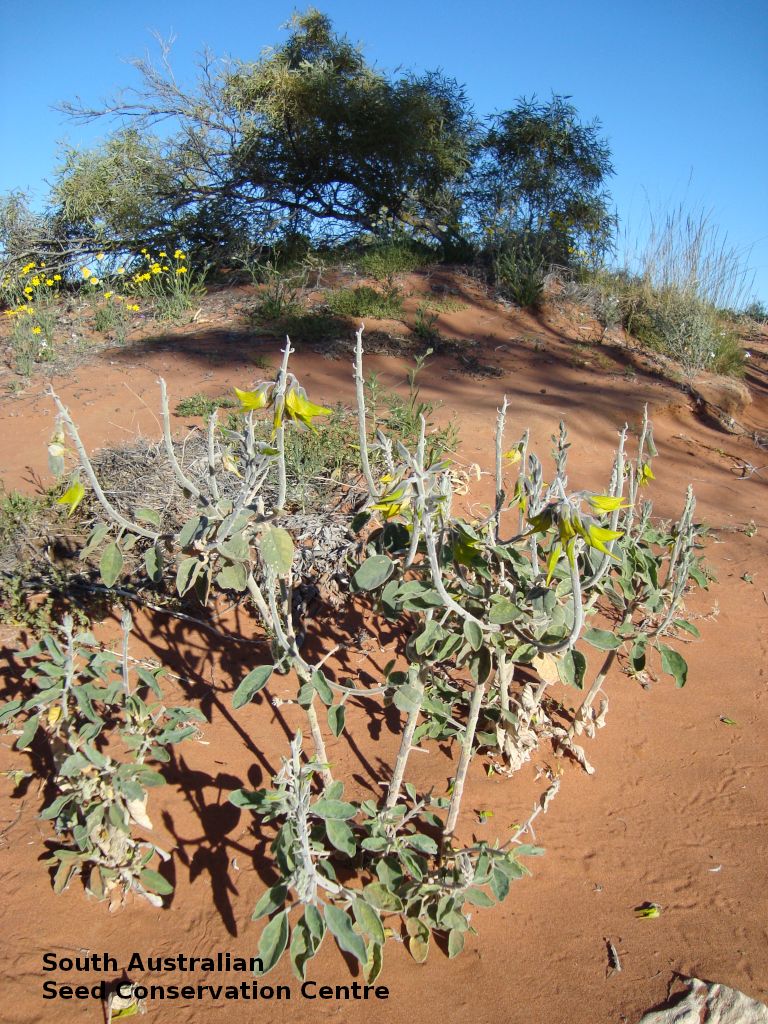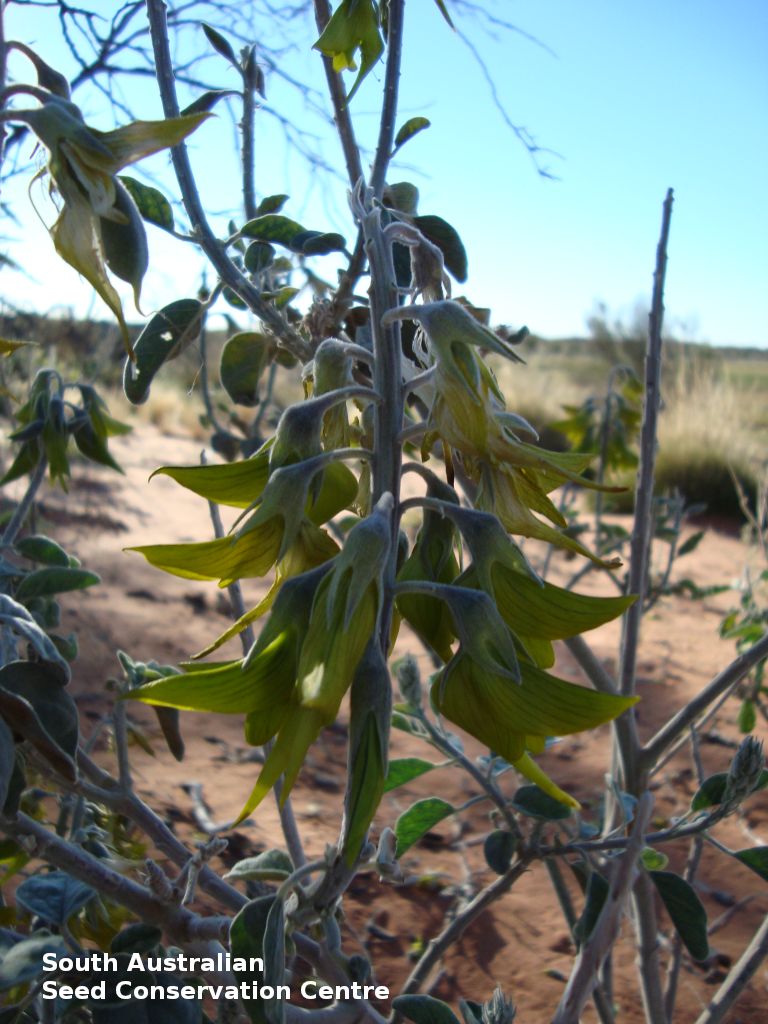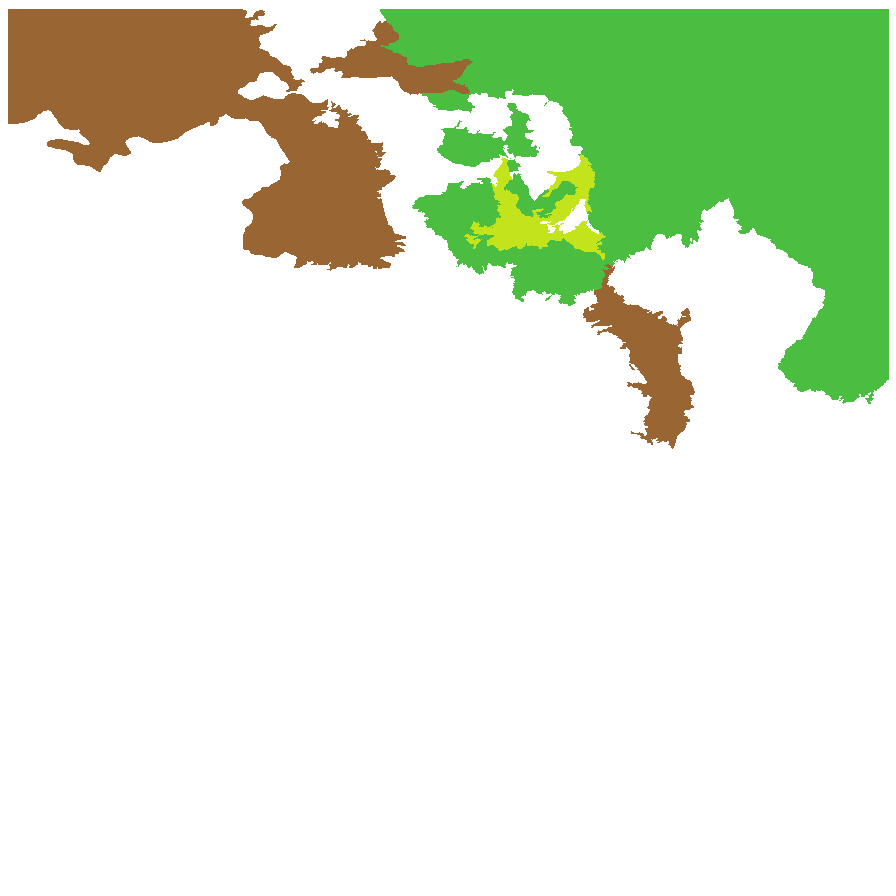











Botanical art
Prior names
Crotalaria cunninghamii
Crotalaria sturtii
Crotalaria cunninghamii var. trifoliolata
Common names
Green Bird-flower
Bird-flower Rattle-pod
Etymology
Crotalaria from the Greek 'crotalon' meaning a rattle, castanet, referring to the sound the dried seed pods make when shaken. Cunninghamii named after Allan Cunningham (1791-1839), an English botanist and explorer, primarily known for his travels in Australia to collect plants. Sturtii named after Captain Charles Sturt (1795-1869), a British explorer of Australia, and part of the European exploration of Australia.
Distribution and status
Found mainly in the north-east corner and extending to the north-west corner of South Australia growing on sandy soils, usually sand dunes. Also found in Western Australia, Northern Territory, Queensland and New South Wales. Native. Common in South Australia. Very rare in New South Wales. Common in the other States.
Herbarium regions: North Western, Lake Eyre, Gairdner-Torrens, Eyre Peninsula
NRM regions: Alinytjara Wilurara, Eyre Peninsula, South Australian Arid Lands
AVH map: SA distribution map (external link)
Plant description
Erect shrub to 2 m high; branches stout, velvety, softly woody. Leaves 1-foliolate, rarely a few 3-foliolate; leaflets ovate to obovate, often broad, to 9 cm long and 6 cm wide; thick, softly- to velvety-tomentose on velvety petioles to 3 cm long. Pea-flowers large, yellow-green with purple veins in dense clusters. Flowering between May and October. Fruits are yellow-brown narrow-obovate pod to 45 mm long and 12 mm; velvety. Seeds are orange-brown reinform seed to 7 mm long and 5 mm wide with a smooth surface. Seed embryo type is bent.
Seed collection and propagation
Collect seeds between August and November. Collect mature pods, those that are fat, turning yellow-brown and contain hard seeds. Place the pods in a tray and leave to dry for one to two weeks. Then use a rubber bung to rub the pods or break the pods open with your fingers to dislodge the seeds. Use a sieve to separate the unwanted material. Store the seeds with a desiccant such as dried silica beads or dry rice, in an air tight container in a cool and dry place. From one collection, the seed viability was high, at 95%. This species has physical dormancy that needs to be overcome for the seed to germinate (e.g. nicking or softening the seed coat).
| Location | No. of seeds (weight grams) | Number of plants | Date collected | Collection number Collection location | Date stored | % Viability | Storage temperature |
|---|---|---|---|---|---|---|---|
| BGA | 3,400 (139.72 g) | 80 | 27-Sep-2007 | MJT94 Lake Eyre | 19-Sep-2008 | 95% | -18°C |
| BGA | 1,000 (49.74 g) | 28-Sep-2011 | Alton Downs Lake Eyre | 1-Nov-2012 | 96% | -18°C |
Number of plants: This is the number of plants from which the seeds were collected.
Collection location: The Herbarium of South Australia's region name.
% Viability: Percentage of filled healthy seeds determined by a cut test or x-ray.